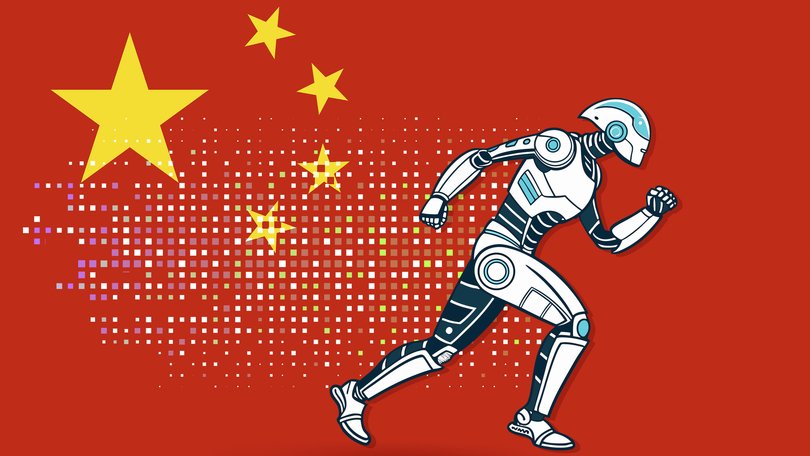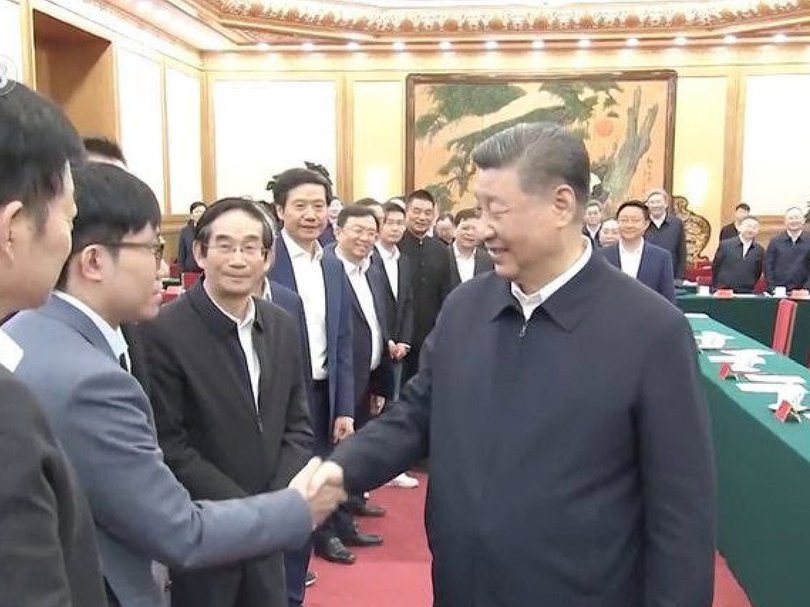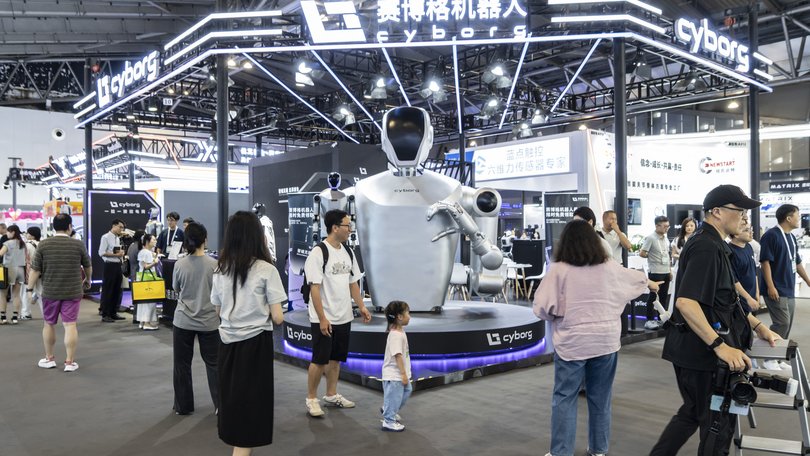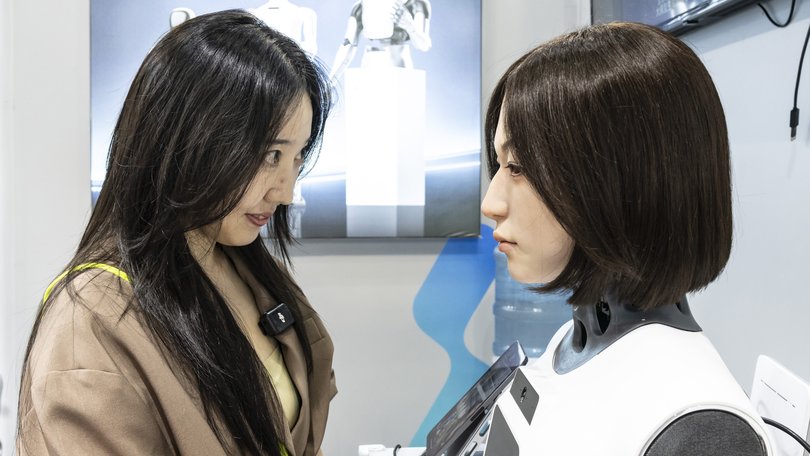THE ECONOMIST: Six months after DeepSeek’s breakthrough, China speeds on with AI

The mecca for China’s boom in artificial intelligence is Liangzhu, a leafy suburb of Hangzhou, the tech-heavy capital of Zhejiang province. The Communist Party has long touted Liangzhu’s famous archaeological remains, dating back to 3300BC, as proof of the age of Chinese civilisation.
Now Liangzhu, with its myriad AI start-ups, represents the future. Investors from all over China flock there to meet growing numbers of founders, app engineers and other AI developers and dreamers.
It is six months since a barely known AI start-up, DeepSeek, caused a huge stir by releasing an impressive open-source model trained for a sliver of the cost of fancier Western ones. Its founder studied at Zhejiang University, a tech mothership not far from Liangzhu. The area is at the heart of an AI ecosystem which China hopes will soon rival America’s.
Sign up to The Nightly's newsletters.
Get the first look at the digital newspaper, curated daily stories and breaking headlines delivered to your inbox.
By continuing you agree to our Terms and Privacy Policy.The signs are promising. Last month three Chinese labs introduced stellar large language models that are reckoned to be among the world’s best.
AI technologies have “broken through the critical threshold of usefulness”, says one early-stage investor who frequents Liangzhu. He predicts a surge in how AI can be applied. “Once the water boils,” he says, “many people want to build a steam engine.”
Mr Sam Hu, at a sunny café in Liangzhu’s main plaza, is one such person. After stints at Tencent, a tech giant, and two ride-hailing firms, last year Mr Hu struck out on his own to develop an AI agent that helps managers make decisions. The moment was right. These days, he explains, “the cost of trial and error is lower”.
The prize for Mr Hu and his peers is enormous. Morgan Stanley, a bank, predicts that China’s AI industry will grow from $US3.2b ($4.9b) last year to $US140 billion by 2030; that figure jumps to $US1.4 trillion when AI-related sectors such as infrastructure and component suppliers are included.
In June last year some 8 per cent of Greater China firms surveyed by Gartner, a consultancy, were using generative AI. Less than a year later the figure had leapt to 43 per cent.
The question now is how to keep the industry steaming along. Some of the early frenzy around DeepSeek has passed, and plenty of users still grumble about how models can “hallucinate”. But DeepSeek’s breakthrough has helped shift China’s approach to AI in profound ways. It has lowered costs and moved the emphasis away from cutting-edge development and cut-throat competition among developers of AI models towards explorations of how AI can be applied across business, industry, the public sector and society itself.
The importance of AI for China — and indeed the way it can outdo America, its promoters increasingly argue — is through its adoption, adaptation and diffusion, that is, spreading the use of AI more broadly.

It helps greatly that China’s leadership believes the same thing, and is offering state backing. President Xi Jinping’s handshake with DeepSeek’s founder, Mr Liang Wenfeng, broadcast earlier this year into the country’s living rooms, helped transform how ordinary Chinese view AI. Grandparents were suddenly keen to try out chatbots.
The early frenzy was all a bit over the top, says Mr Louis Dong, who developed AI courses for schoolchildren after parents bombarded the education company he works for with requests. Now, Mr Dong says, the focus is on identifying applications for specific industries and putting AI capabilities to pragmatic use. Rapid adoption is key, many experts argue, and DeepSeek’s breakthrough, along with advances in other models, is enabling it.
Companies appear to be adopting a more can-do attitude by experimenting with the technology. There is still room for improvement. Accenture, a consultancy, found that 46 per cent of Chinese firms have broadly integrated generative AI, but only 9 per cent saw real benefit in productivity or profit growth. It is early days, AI executives insist.
Mr Jiang Xinghua, chief technology officer at Yizhi Intelligence, which develops AI customer-service agents for chemists and furniture stores and AI livestreamers for beauty brands, says ever more clients want to adopt AI-enabled products, and are even tolerant of them making minor mistakes.
A big question is how much AI products can improve. A lot, say China’s techno-optimists. Chinese efforts to train new models have been complicated by America’s ban on exports of its most advanced AI chips.
In April President Donald Trump’s administration banned shipments to China of Nvidia’s H20 chip, which is deliberately hobbled to make it less effective for training (though it is well suited to “inference” — the process of actually running AI models for customers). In July America reversed course. Yet the political uncertainty and risk remains.

Strikingly, however, China’s AI development seems to sail on through the turbulence. At China’s biggest AI conference to date, in Shanghai last month, Mr Yan Junjie, the boss of MiniMax, a leading Chinese model-maker, declared that “the inference costs for the best models have fallen by an order of magnitude”. He predicts further sharp falls in the next year or two, driven by innovation and fierce domestic competition.
Mr Jiang of Yizhi Intelligence says that although Chinese AI development is frustrated by being denied the best foreign models (such as America’s GPT and Gemini), domestic open-source models are improving rapidly.
Meanwhile, the state is playing a big role, not only by supporting AI development, but also in creating demand. In April, when the leadership convened a study session on AI, Mr Xi talked about making the most of China’s juguo tizhi youshi — its systematic, state-led advantage in mobilising the whole country.
Lower levels of government, used to reading cues from the top and keen to find new areas of economic growth, have embraced the message, sometimes rather keenly. When Rokid, a Hangzhou start-up making AI-equipped glasses, submitted an application to the district-level government for a subsidy, ¥3 million ($645,000) appeared in its account within eight minutes.
Across China, cities are rushing to offer subsidies for everything from housing to computing power to tailoring open-source models to suit business needs. The state is also an important customer. State museums offer Rokid glasses for tours, while state power workers use them to identify faults along transmission lines.
Meanwhile, provincial and municipal governments have rushed to use DeepSeek to improve hotlines, analyse data and interpret policies for residents. Professor Shen Yang, of Tsinghua University, says he has consulted for twice as many government units across China this year compared with last year.
They all want to know how to use AI. One example he cites is Beijing’s Haidian district, well known for its tech universities and businesses, which has deployed AI software to help teachers prepare lessons. Another is Jiangxi province, which wants to integrate AI into its rare-earth and ceramics industries.

Plenty of risks come with the state and investors rushing in. Analysts at Jefferies, an investment bank, identify enthusiasm for humanoid robots as a bubble in the making.
Humanoid robots are part of an “embodied AI” push written into the central government’s work report this year. Local governments are falling over themselves to back them. Yet it may be years before the humanoids can be put to profitable use — if they ever can.
Other applications of AI might carry greater risks than excess capacity. In April Tsinghua researchers asked if the more than 300 Chinese hospitals already using DeepSeek were moving “too fast, too soon” and were in danger of making diagnoses based on false outputs. Last month another group of researchers identified “an urgent need” to ensure that AI was being safely and responsibly deployed at hospitals.
The central leadership is growing more aware of the possible pitfalls. Last month Mr Xi named AI, along with computing power and electric vehicles, as areas shown excessive attention by local governments. “Do all provinces have to develop industries in these directions?”
The answer is surely no. But for now, their involvement is another reason for thinking that China’s AI juggernaut will keep rolling.
Originally published as Six months after DeepSeek’s breakthrough, China speeds on with AI
